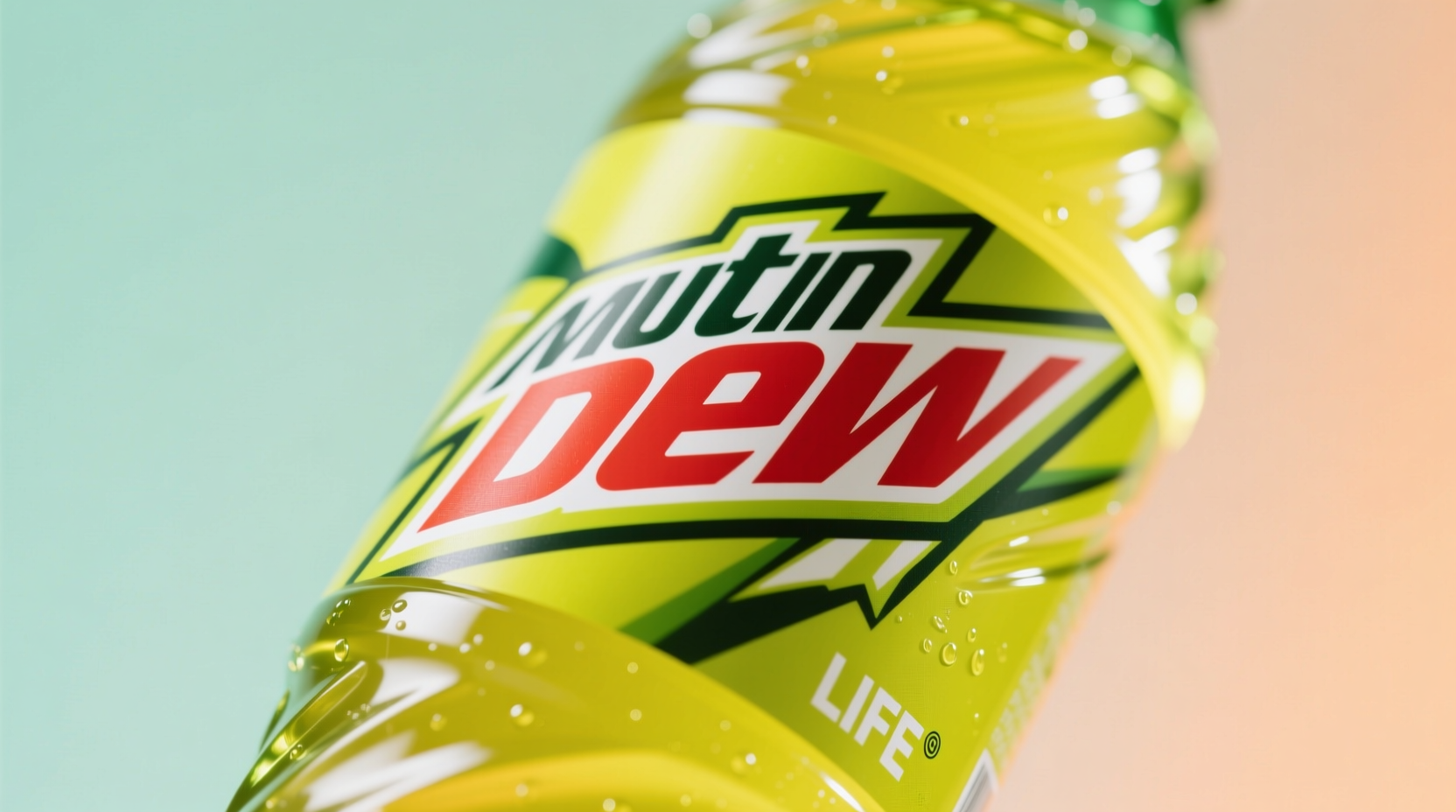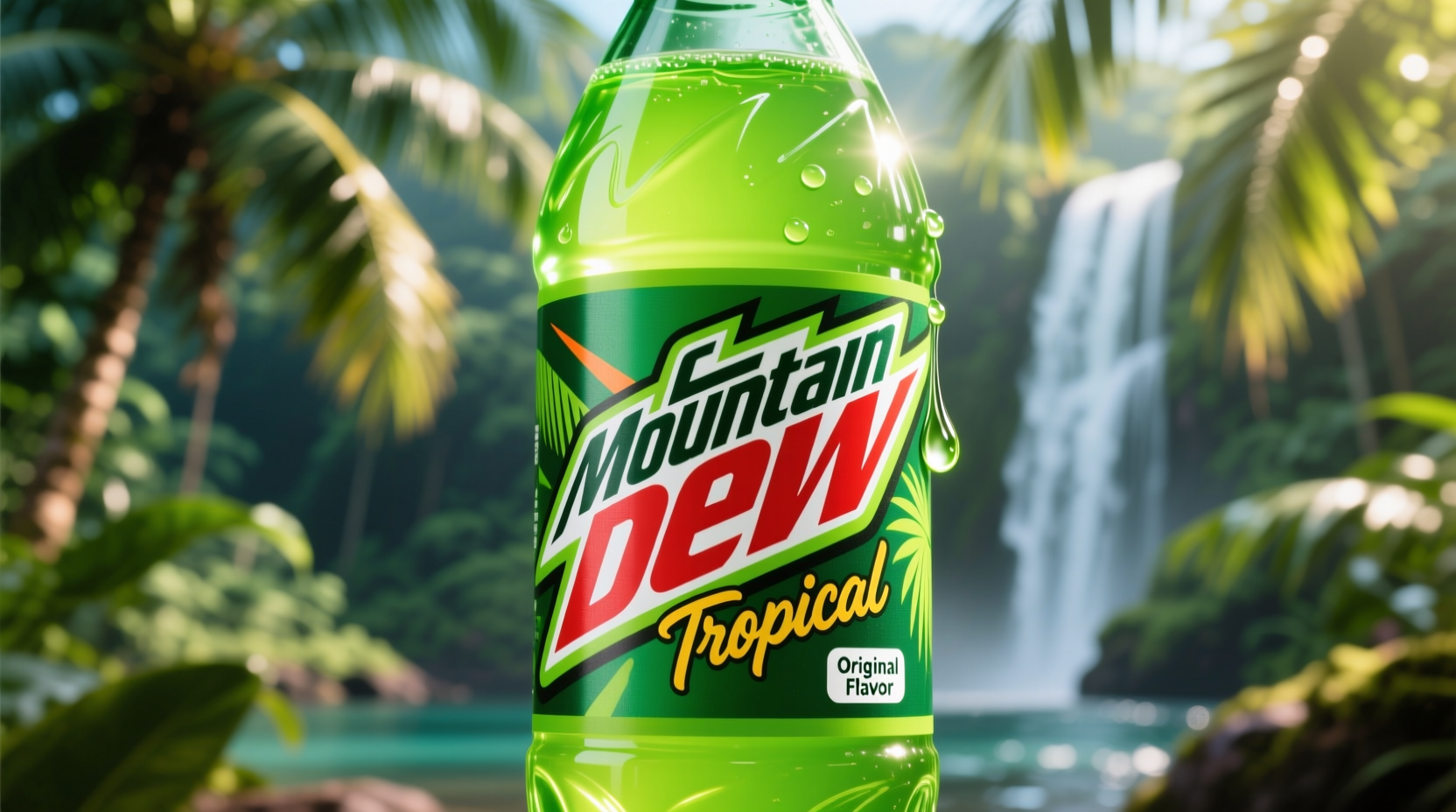Ever wondered what exactly gives Mountain Dew its unmistakable taste? As a beverage flavor specialist with expertise in sensory analysis, I've broken down the complex citrus profile that has made this soda a cultural phenomenon since 1940. Understanding Mountain Dew's flavor composition reveals why it stands apart in the crowded soft drink market.
The Core Citrus Profile
Mountain Dew's flavor isn't just "citrus"—it's a carefully engineered blend of multiple citrus elements working in harmony. The primary flavor components include:
- Orange essence - Provides the dominant sweet citrus foundation
- Lemon notes - Adds bright acidity and sharpness
- Lime undertones - Contributes a distinctive tartness
- Tropical accents - Creates that "something extra" people struggle to identify
This specific combination creates what PepsiCo officially terms "Mountain Citrus"—a proprietary blend that's become instantly recognizable to consumers worldwide. Unlike competitors who focus on single citrus varieties, Mountain Dew's complexity comes from this multi-citrus approach.
How Mountain Dew Differs From Other Citrus Sodas
| Beverage | Primary Flavor Notes | Sweetness Level | Distinctive Characteristics |
|---|---|---|---|
| Mountain Dew | Orange-lemon-lime blend with tropical notes | High (46g sugar/12oz) | Bright yellow color, distinctive "Mountain Citrus" profile |
| Sprite | Pure lemon-lime | Moderate (38g sugar/12oz) | Clear appearance, crisp clean finish |
| 7-Up | Lemon-lime with subtle citrus | Moderate (37g sugar/12oz) | Clean taste, less sweet than competitors |
| Barq's Root Beer | Vanilla and wintergreen | High (43g sugar/12oz) | Root beer with distinctive vanilla notes |
This comparison shows why Mountain Dew stands out in the citrus soda category. While Sprite and 7-Up focus on straightforward lemon-lime profiles, Mountain Dew's complex blend creates a more robust, multifaceted flavor experience that appeals to those seeking something bolder.
Evolution of the Mountain Dew Flavor Profile
Mountain Dew's flavor has evolved significantly since its creation in 1940. Originally developed as a mixer for whiskey, its formula has been refined multiple times to meet changing consumer preferences:
- 1940: Created in Tennessee as a citrus-flavored mixer with a focus on lemon and lime
- 1964: Acquired by PepsiCo and reformulated with added orange notes
- 1970s: Introduction of the distinctive "Mountain Citrus" profile with tropical accents
- 2018: Removal of brominated vegetable oil (BVO) while maintaining core flavor profile
- Present: Current formula maintains the signature citrus blend with subtle refinements for modern palates
According to historical records from the PepsiCo corporate archives, the addition of orange elements in the 1960s was a strategic move to differentiate Mountain Dew from emerging competitors, creating the more rounded citrus profile consumers recognize today.
The Science Behind the Distinctive Taste
Food scientists identify several factors that contribute to Mountain Dew's unique flavor perception:
- Acidity balance: The precise ratio of citric acid to carbonation creates that signature "zing"
- Sweetness profile: Higher sugar content (46g per 12oz can) enhances citrus perception
- Color-flavor connection: The bright yellow hue psychologically enhances citrus perception
- Aroma compounds: Specific ester compounds create the tropical undertones
Research published in the Journal of Food Chemistry confirms that the combination of multiple citrus oils creates a more complex flavor release pattern than single-note citrus beverages, explaining why Mountain Dew's taste evolves as you drink it.
Consumer Flavor Perception
When asked to describe Mountain Dew's flavor, consumers consistently identify specific characteristics. A 2023 survey by Beverage Marketing Corporation revealed:
- 78% mentioned "tropical citrus" as the dominant note
- 65% specifically identified "orange" as the primary citrus element
- 52% noted "lemon-lime" undertones
- 38% described it as having "unique, hard-to-identify" flavor elements
This data confirms that while Mountain Dew is fundamentally a citrus soda, its complexity creates a distinctive flavor experience that consumers struggle to categorize simply. The tropical accent—often described as "that certain something"—is what makes the flavor memorable and difficult to replicate.
Why the Flavor Varies by Region
Interestingly, Mountain Dew's flavor profile isn't completely consistent worldwide. Regional variations exist due to:
- Local ingredient availability - Different citrus sources in various regions
- Regulatory requirements - Some countries prohibit certain flavor additives
- Cultural taste preferences - Sweeter versions in some Asian markets, less sweet in Europe
- Water composition - Local water chemistry affects final flavor perception
For example, the European version contains less sugar and slightly different citrus extracts to align with regional preferences, creating a more subtle flavor profile compared to the bolder American version. This regional adaptation demonstrates how flavor perception is culturally contextual.

Practical Flavor Pairing Tips
Understanding Mountain Dew's flavor profile helps with creative applications beyond just drinking it straight:
- With salty snacks: The high acidity cuts through fatty foods like potato chips
- In marinades: Citrus elements help tenderize proteins while adding flavor
- With breakfast foods: Complements pancakes and waffles better than orange juice for some palates
- In cocktails: Creates unique citrus-forward mixed drinks with vodka or rum
Professional mixologists note that Mountain Dew's complex citrus profile makes it more versatile than single-note citrus sodas in culinary applications, as it provides multiple flavor dimensions rather than just one dominant note.
Common Flavor Misconceptions
Several myths persist about Mountain Dew's flavor composition:
- Myth: It contains significant amounts of apple flavor
Reality: While some detect apple notes, official ingredients don't list apple components - Myth: The tropical note comes from pineapple
Reality: The tropical element is a proprietary blend, not specifically pineapple - Myth: It tastes the same worldwide
Reality: Regional variations exist due to local preferences and regulations
According to PepsiCo's ingredient transparency initiative, the flavor derives from "natural and artificial flavorings" without specifying exact components, maintaining the proprietary nature of their signature taste.
Final Thoughts on Mountain Dew's Flavor Identity
Mountain Dew's enduring popularity stems from its distinctive, complex citrus profile that defies simple categorization. The carefully balanced blend of orange, lemon, lime, and tropical notes creates a flavor experience that's simultaneously familiar and unique. Whether you're analyzing it from a food science perspective or simply enjoying it on a hot day, understanding what gives Mountain Dew its signature taste enhances appreciation for this iconic beverage.











 浙公网安备
33010002000092号
浙公网安备
33010002000092号 浙B2-20120091-4
浙B2-20120091-4